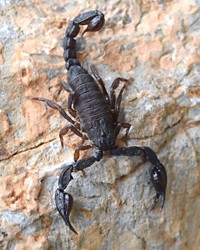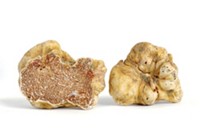Advertisement
Grab your lab coat. Let's get started
Welcome!
Welcome!
Create an account below to get 6 C&EN articles per month, receive newsletters and more - all free.
It seems this is your first time logging in online. Please enter the following information to continue.
As an ACS member you automatically get access to this site. All we need is few more details to create your reading experience.
Not you? Sign in with a different account.
Not you? Sign in with a different account.
ERROR 1
ERROR 1
ERROR 2
ERROR 2
ERROR 2
ERROR 2
ERROR 2
Password and Confirm password must match.
If you have an ACS member number, please enter it here so we can link this account to your membership. (optional)
ERROR 2
ACS values your privacy. By submitting your information, you are gaining access to C&EN and subscribing to our weekly newsletter. We use the information you provide to make your reading experience better, and we will never sell your data to third party members.
Chemists Dispute How 'Into The Wild' Protagonist Chris McCandless Died
Experts say new tests don’t support best-selling author’s poison claim
by Carmen Drahl
October 23, 2013
| A version of this story appeared in
Volume 91, Issue 43

In 1992, a party of moose hunters discovered the remains of a 24-year-old man in the Alaska wilderness. His name, they would learn, was Christopher J. McCandless. His tale would rise to international prominence in 1996 as the subject of a best-selling book, and later a movie, called “Into the Wild.”
WHAT IS β-ODAP?

\
Names: β-N-Oxalyl-l-α,β-diaminopropionic acid (β-ODAP); l-β-oxalyl aminoalanine (BOAA); l-2-amino-3-oxalylaminopropanoic acid; dencichine.
Known sources: Grass pea (L. sativus), some other Lathyrus plants, and some Panax, Crotalaria, and Acacia plant species.
Effects: Glutamate mimic and neurotoxin. Its mechanism is not fully understood. Long-term exposure affects neurons in the lumbar portion of the spinal cord, paralyzing legs, a condition known as lathyrism.
Who’s at risk: Lathyrism occurs when a plant such as grass pea is consumed as a sole food source for a period of weeks or months. Men are more susceptible than women.
SOURCES:Vijayalakshmi Ravindranath, National Brain Research Centre, in India; Peter Nunn, University of Portsmouth, in England
The story polarized readers. Some praised McCandless’s choice to leave a comfortable existence to embrace the uncertainty of the backcountry. Others derided him as an unprepared fool.
A coroner’s report ruled the man probably starved to death. But his photos and cryptic diary pointed the author of “Into the Wild,” Jon Krakauer, elsewhere. In his book, he posited that McCandless accidentally ate a poison. And last month, in a blog post at The New Yorker, Krakauer cited a new chemical analysis supporting the idea that McCandless ate poisonous seeds from a wild potato known as Hedysarum alpinum. Though this plant is thought to be nontoxic, he wrote, the seeds actually contain crippling levels of a neurotoxic amino acid, β-N-oxalyl-
But those data, from high-performance liquid chromatography (HPLC) separations of potato seed extracts, don’t show what Krakauer says they do, according to experts who reviewed the report for C&EN. In fact, they say, the extract was barely separated at all, making it impossible to tell what the seeds contain.
Krakauer had sent freshly collected seeds to Ann Arbor, Mich., chemical analysis firm Avomeen Analytical Services. The lab conducted HPLC analysis and concluded that H. alpinum seeds contain 0.394% β-ODAP by weight, which is within levels that cause paralysis. Krakauer made Avomeen’s data publicly available at the Alaska Dispatch news website.
However, “there are problems with that report,” says Daniel W. Armstrong of the University of Texas, Arlington, who specializes in chromatographic separations. He says the HPLC data cannot be used to conclude that wild potato seeds contain β-ODAP.
To search for β-ODAP in the potato seeds, Avomeen adapted an existing published protocol, Armstrong explains, but Avomeen’s data differ dramatically from what would be expected on the basis of the protocol.
Avomeen’s purported β-ODAP peak exits the HPLC column after less than three minutes, Armstrong says. This suggests that the seed extract had little to no interaction with the HPLC column. Without interacting with the column for a longer time, the extract’s many components cannot be separated effectively. The peak is “somewhat broad and misshapen,” Armstrong says, further suggesting that the peak contains a mixture rather than β-ODAP alone.
Avomeen’s β-ODAP peak was also the first thing to exit the HPLC column, and that’s another oddity, says David G. Klapper, an emeritus professor at the University of North Carolina, Chapel Hill, and an expert in amino acid separation technology. Avomeen chemically modified the amino acids in the extract according to the literature procedure. This chemistry leads to formation of a salt, and in most cases this salt is the first compound to exit the column. “It would be very unusual indeed for the target compound to precede the salt,” and in the Avomeen report, the salt peak comes after the purported β-ODAP peak, Klapper says. Because of that “I would question the Avomeen data,” he concludes.
One reason for these radical differences is probably pH, Armstrong says. The published report calls for 0.1 M sodium acetate buffer adjusted to an acidic pH of 4.6. Avomeen’s team reported using 0.1 M sodium acetate but did not report a pH. It’s possible the team didn’t adjust the pH of their sodium acetate solution, so it would have an alkaline pH of 8.9, instead of 4.6. “That’s going to cause a big difference in the chromatography,” Armstrong says.
Evolving Theory: What Killed Chris McCandless?
1992 Fairbanks, Alaska, coroner’s report: Probable starvation
1993 Outside magazine: Mistakenly ate poisonous seeds of the wild sweet pea (Hedysarum mackenzii)
1997 “Into the Wild,” 1997 edition: Ate seeds of the wild potato (H. alpinum); early tests suggest they contain poisonous alkaloid swainsonine
Mid-2000s University of Alaska, Fairbanks, chemist Tom Clausen concludes H. alpinum seeds do not contain swainsonine
2007 “Into the Wild,” 2007 edition: Ate H. alpinum seeds contaminated with Rhizoctonia leguminicola, a mold that produces swainsonine
Late 2000s Clausen’s student grows mold on H. alpinum but finds no swainsonine or related alkaloids
2013 The New Yorker post: Ate seeds of the wild potato (H. alpinum), which contain neurotoxin β-ODAP
Philip J. Proteau, who studies natural products at Oregon State University, agrees there are serious questions. “These experiments are not conclusive in any way,” he says. Like Armstrong, he believes the single HPLC peak likely contains multiple compounds.
Armstrong, Klapper, and Proteau all say that new data are needed to determine whether H. alpinum seeds contain β-ODAP. A new HPLC analysis that includes mass spectrometry (MS) and pays careful attention to buffer pH could settle the question, Armstrong says.
Klapper says it might be simpler to inject seed extract directly into a mass spectrometer. “Mass spec takes about a minute, but it is the gold standard for identification,” he says.
Proteau would like to see additional tests on top of MS. “Full confirmation of the presence of β-ODAP would require nuclear magnetic resonance data and proof that the correct
Krakauer tells C&EN that Avomeen is conducting another round of analysis, this time with MS. Both Krakauer and Avomeen declined to comment for this story, pending the outcome of that test.
The idea is certainly worth follow-up work, the chemists say. “The analysis as it stands is far from conclusive, but the β-ODAP hypothesis is very intriguing,” Proteau says.
“If it’s true that β-ODAP is in the seeds of this particular plant, people need to know about that,” Armstrong says. If the seeds test positive, it might even be possible to perform another autopsy on McCandless’s body to search for evidence of the toxin, if the body hasn’t decomposed too much, Armstrong says.
“I am very interested in what [Avomeen] finds,” says Thomas P. Clausen, an emeritus professor from the University of Alaska, Fairbanks, who is an expert in plants’ chemical defenses. Clausen’s lab helped Krakauer analyze wild potato seeds for the first edition of “Into the Wild.” Clausen says it’s possible that his own lab’s analyses may have missed β-ODAP, but he’d like to see more data before he’ll be convinced that it is present.
No matter what the science ultimately decrees, Clausen says, there will always be those who refuse to change their minds about McCandless. “Alaskans are a little too hard on Chris,” Clausen says. “I don’t know anyone who’s spent time in the wilderness without making a few mistakes,” he says. “Chris just paid very dearly for his.”






Join the conversation
Contact the reporter
Submit a Letter to the Editor for publication
Engage with us on Twitter